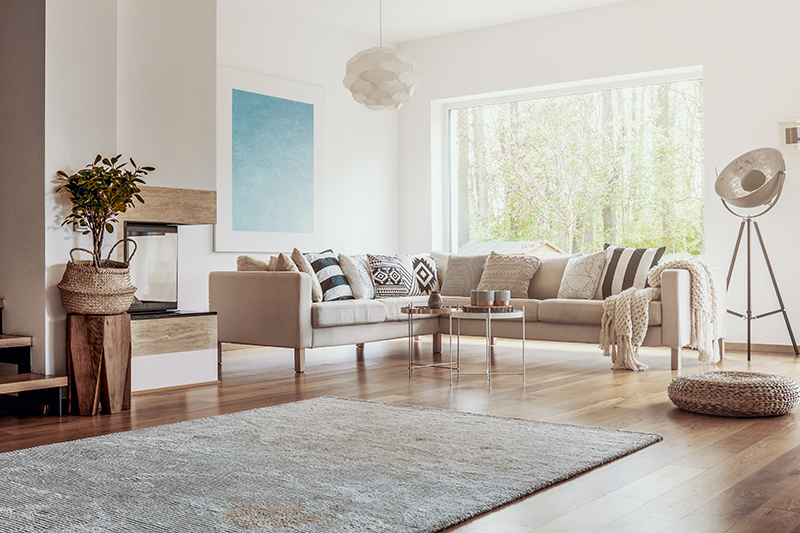Ah, the feeling of coming home to a cozy space. It's not just about aesthetics; it's about stepping into a haven of relaxation and wellbeing. But what makes a space truly "cozy," and how can we harness the science behind it to create homes that promote our physical and mental well-being? Buckle up, interior design enthusiasts and comfort seekers, because we're diving into the fascinating science of cozy!
Temperature Matters: It might seem obvious, but temperature plays a crucial role in coziness. Studies show that slightly cooler temperatures (around 68°F) promote better sleep and relaxation. This doesn't mean living in a constant shiver, but consider layering throws and rugs for snuggle sessions while keeping the overall temperature slightly lower.
Light Makes a Difference: The right lighting can dramatically impact mood and relaxation. Harsh overhead fluorescents are a no-go! Opt for warm, dimmable fixtures and lamps that emit soft, yellow light. Candles (responsibly used, of course) and string lights add a magical touch, mimicking the calming effect of firelight.
The Power of Texture: Touch plays a significant role in our perception of comfort. Surround yourself with soft textures like plush throws, fluffy pillows, and cozy rugs. Natural materials like wood, wool, and cotton tend to feel more inviting than synthetic counterparts. Consider layering textures for visual and tactile interest.
Color Psychology: Did you know colors can influence emotions? Opt for calming hues like blues, greens, and soft greys for walls and furniture. Warm accents like browns and beiges can add a touch of coziness without overwhelming the space. Avoid harsh contrasts and stick to a harmonious color palette.
Scentsational Relaxation: Our sense of smell can be a powerful trigger for feelings of comfort and relaxation. Diffuse calming essential oils like lavender, chamomile, or sandalwood. Alternatively, bake some cookies (the aroma itself is therapeutic!), light scented candles, or place fresh flowers with calming scents like lavender or lilies around the house.
Nature's Nurture: Bringing the outdoors in can significantly enhance feelings of tranquility. Decorate with houseplants, natural materials like wood and stone, and incorporate natural light whenever possible. Studies show that even looking at pictures of nature can reduce stress and promote relaxation.
Declutter for Clarity: Clutter bombards our senses and contributes to stress. Regularly declutter your space, leaving only items that bring you joy and function. Consider hidden storage solutions to keep surfaces clear and create a sense of visual calm.
Personalize Your Paradise: Your home should reflect your unique personality and preferences. Surround yourself with items that evoke positive memories and emotions. Display collections, artwork, and photos that you find meaningful. This personalization creates a sense of belonging and comfort.
By understanding and applying these science-backed principles, you can transform your home into a haven of relaxation and well-being. Remember, "cozy" is subjective, so don't be afraid to experiment and find what works best for you. Happy creating your own personal sanctuary!
Bonus Tip: Create a dedicated "cozy corner" in your home with plush cushions, warm lighting, and calming scents. This becomes your go-to spot for unwinding and de-stressing after a long day.



